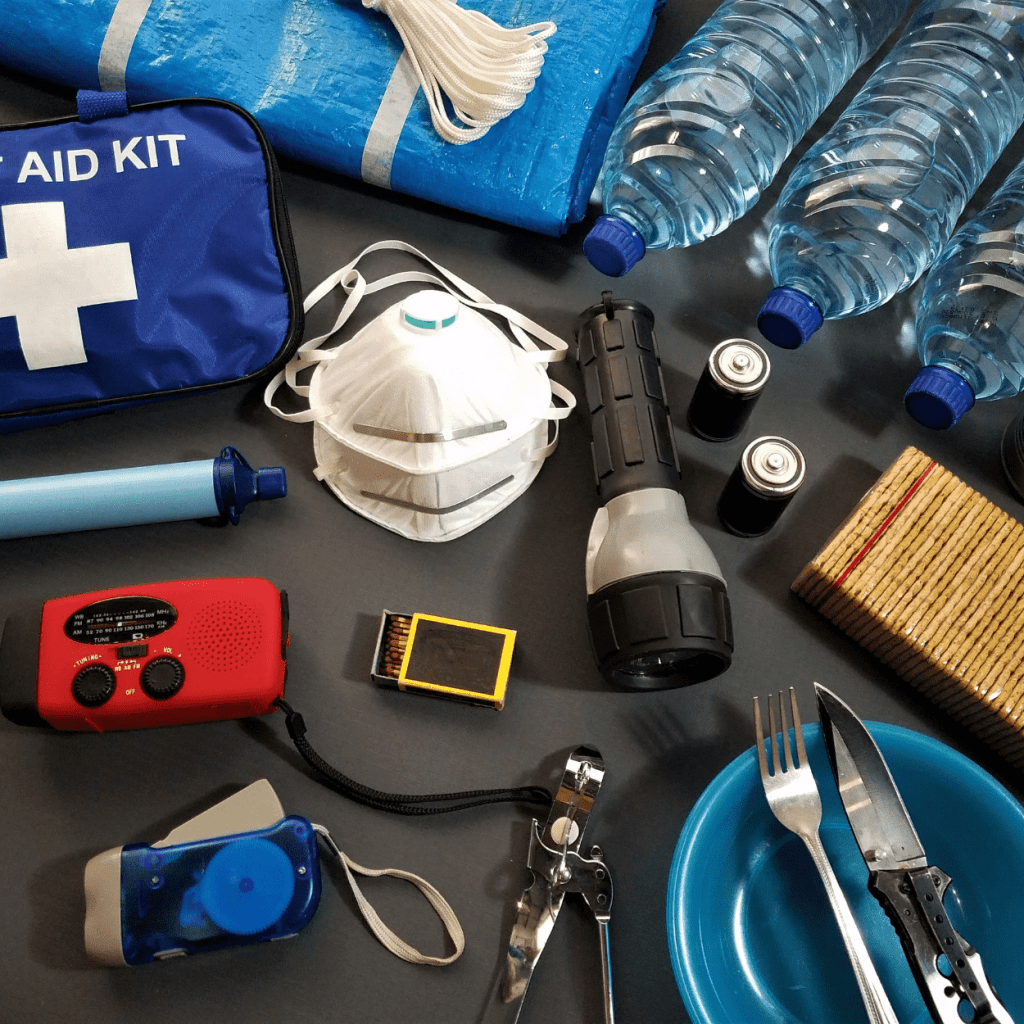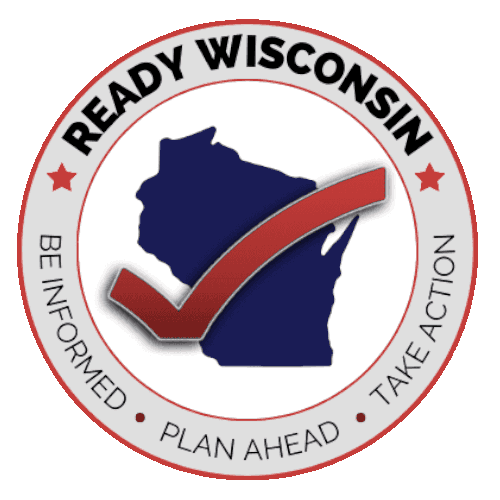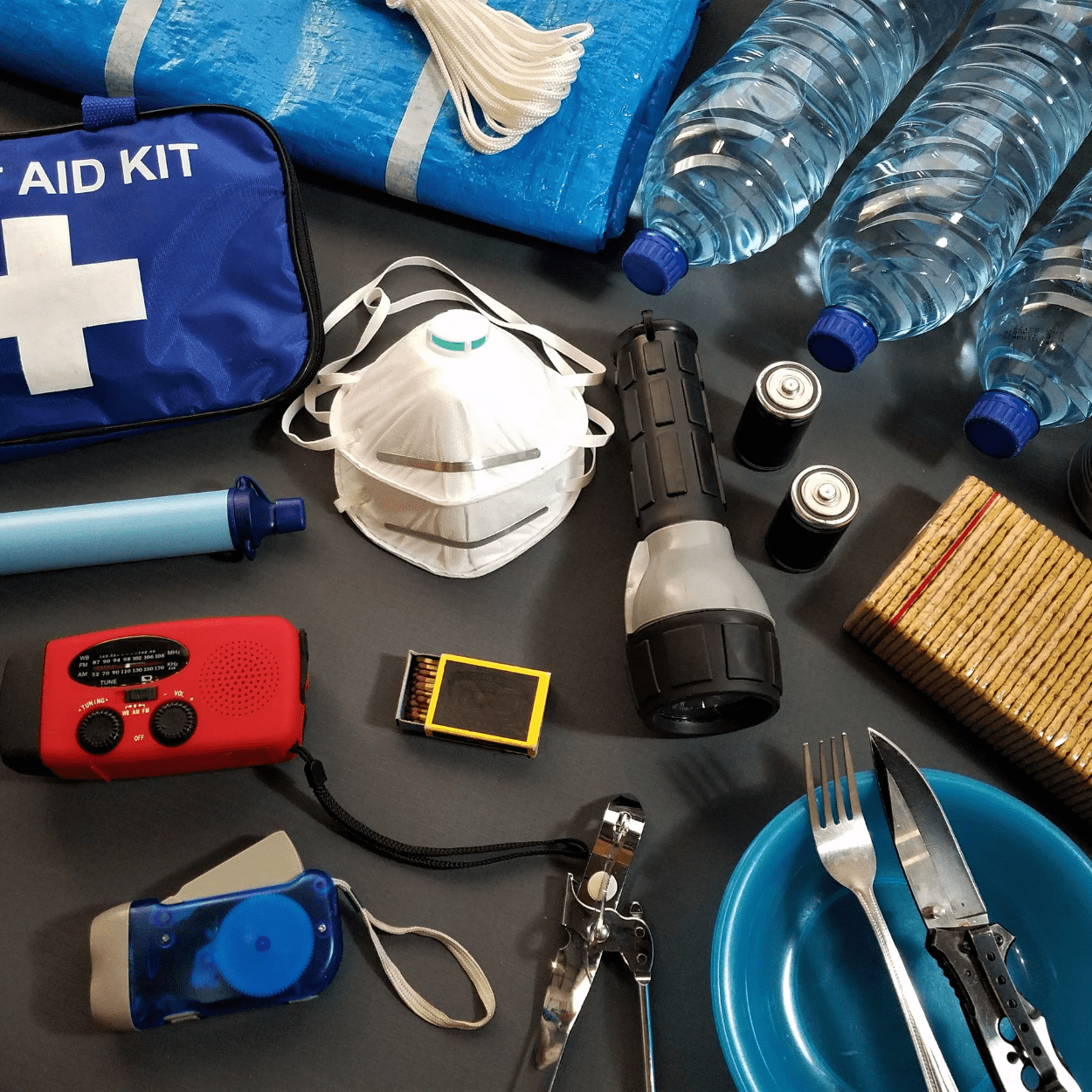A home disaster preparedness kit should include items you believe may be needed to keep your family safe and comfortable in an emergency. Keep your kit clearly labeled in a cool, dry place where it’s easily accessible when you need it at home or a shelter.
You will need to periodically go through your emergency supply kits to make sure the items in it are not outdated. Go through your supply kits at least every six months to check for food, batteries, and other items that may have expired.
To assemble your kit, store items in airtight plastic bags and put your entire disaster supplies kit in one or two easy-to-carry waterproof containers such as plastic bins or a duffel bag.
- Water and non-perishable food for each person for 3-5 days
- First aid kit
- Money (ATMs or online services may be unavailable)
- Copies of important documents such as driver’s licenses, birth certificates, insurance policies, and financial information
- Can opener, plates, and utensils
- Flashlight, battery-operated radio, and extra batteries for each
- Extra clothing and bedding

Specialty Items For Your Home Emergency Kit
Some families may have special needs or other items to consider for their emergency kits.
- If you have infants, remember to pack enough formula, diapers, bottles, and pacifiers.
- If you have children, consider adding books, toys, or games to help keep them occupied.
For Older Adults
Additional items to include in an emergency kit for older adults include:
- A 3–5-day supply of medications
- ID band (full name, contact number for family member/caregiver, and allergies)
- Hearing aids and extra batteries
- Glasses or contacts and contact solution
- Medical supplies
- Information about medical devices such as wheelchairs, walkers, and oxygen
- Documents in a water-proof bag. These may include:
- Power of attorney and/or medical power of attorney documents, as appropriate
- Care plan
- List of medications
- Contact information for family, caregivers, and doctors
- List of allergies
- Copies of medical insurance or Medicare cards
For Those With Physical Disabilities
This checklist includes medical devices, assistive technology devices, and supplies for people with physical disabilities you may need for your personal emergency kit.
These items are to be considered in addition to the items listed above:
- Stethoscope
- Blood pressure cuff
- Kits for ostomy, urostomy, and/or wound care supplies
- Medical alert devices
- Special dietary needs
- Medications
- Respiratory devices
- Heavy gloves for wheeling
- Small mechanic’s toolkit
- Bicycle tire pump and tire repair kit
- WD-40
- Magnifying glass
- Scissors
- Small sewing kit
- Paper/notebook and pencil/pen
- Communication devices
- Mobility Devices
- Prosthetic/Orthotic devices
- Assistive technology devices
For Those With Special Needs
In addition to supplies needed for a general emergency, you may need to add several things to help yourself or loved ones with special needs.
- Copy of care plan
- List of behavioral triggers and medical needs
- Bring familiar items that will help those with autism or other developmental disorders adjust to new surroundings.
- A list of any communication difficulties, including the best way to communicate with your or a loved one
- Your IEP and any medical records or evaluations on hand
- Pack any needed assisted technology devices and don’t forget chargers.
- iPads (and other medical equipment) used to communicate
- Bring headphones or earplugs to help with noises
- Consider a roll of duct tape to help create visible perimeters of your space in a communal-style shelter

